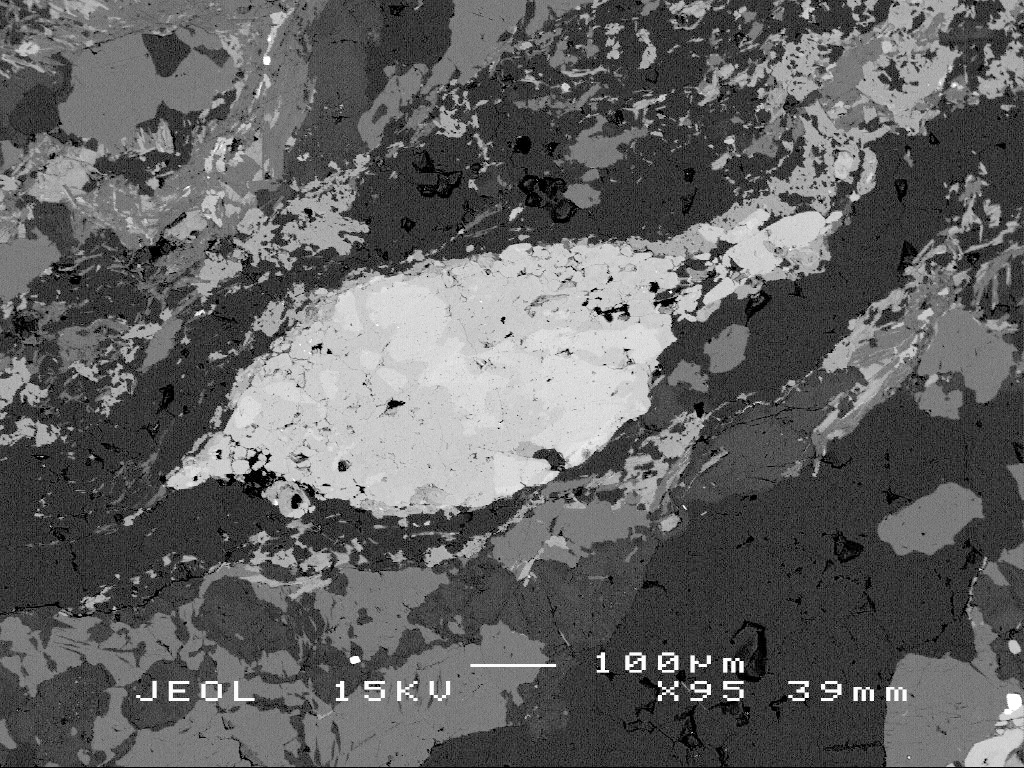Working with colleagues from the National Geophysical Research Institute in Hyderabad, India, Prof. Neal McNaughton and his Curtin University colleagues measured the age of igneous titanite found in southern India. Titanite is a common mineral formed when granite magmas cool and crystallise. A sensitive, high-resolution ion microprobe (SHRIMP) was used to produce backscattered electron images in the AMMRF (now Microscopy Australia) Linked Laboratory at Curtin – one of which is shown in the associated image. The brighter areas represent remnants of igneous titanite formed 2570 million years ago. The darker areas are recrystallised and altered titanite, formed when the original igneous grain was flattened during a subsequent deformation event 2516 million years ago.

SHRIMP image of igneous titanite.
The biggest advantage of using SHRIMP is its capability to date both generations of titanite in situ on the same grain. Importantly, nearby gold mineralisation – which accompanied the titanite deformation – was independently dated with SHRIMP and yielded the same age. These data allowed the 4D evolution of the gold deposit to be quantified and integrated with similar data from other gold deposits. This led to a 4D picture of the mineralisation process in the terrane, providing new gold exploration concepts that are applicable worldwide.
Mohan et al., Precambrian Research 243, 2014.
SHRIMP image of igneous titanite
October 24, 2014